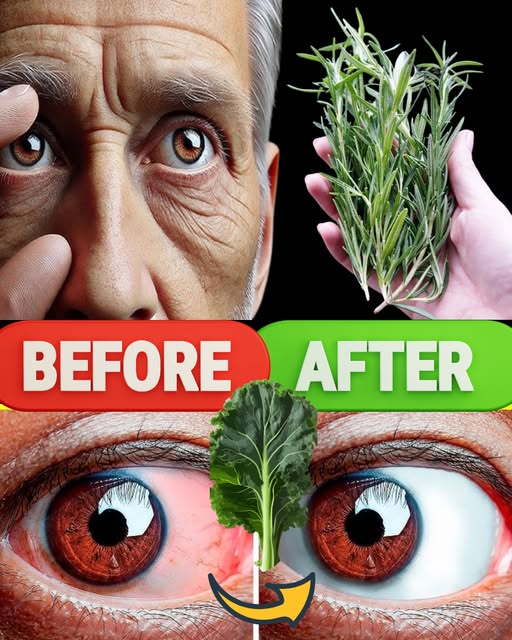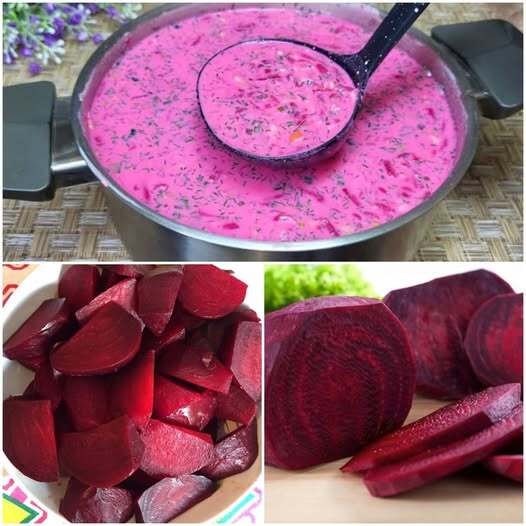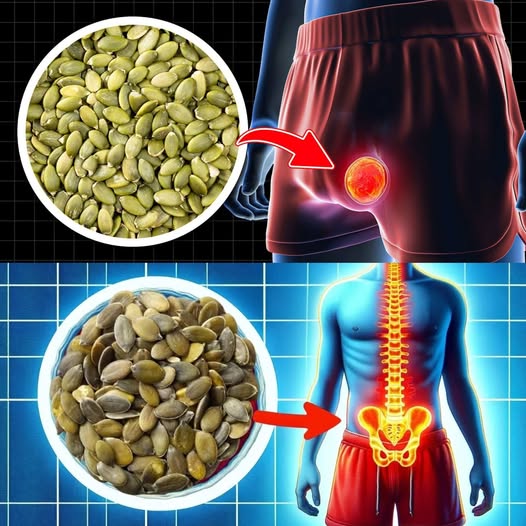Introduction: Can Natural Leaves Really Help Restore Vision?

In today’s digital world, where screen time is at an all-time high and eye strain is becoming the new normal, the quest for better vision is more pressing than ever. Glasses, eye drops, and surgeries dominate the market, but what if nature already had the answers?
Yes, there are powerful, often-overlooked healing leaves that can naturally support, protect, and even restore vision. Used for centuries in traditional medicine systems like Ayurveda and Traditional Chinese Medicine, these leaves are now being revisited by modern science for their potent ocular benefits.
This article will uncover 8 healing leaves—from the humble spinach to the exotic bilberry—that hold the key to stronger, clearer vision. Whether you’re struggling with dry eyes, night blindness, or early signs of macular degeneration, these vision-enhancing leaves might just be what your eyes have been craving.
Let’s dive in.
Why Focus on Leaves?
Leaves are the green factories of nature—rich in chlorophyll, carotenoids, flavonoids, and essential vitamins. These compounds:
- Reduce oxidative stress in the retina
- Improve blood circulation to the optic nerve
- Protect against age-related macular degeneration (AMD)
- Support retinal regeneration
- Help combat diabetic retinopathy and cataracts
Now, let’s explore the 8 healing leaves that deserve a spot on your plate—and perhaps, in your next health plan.
🌿 1. Spinach Leaves – The Lutein Leader
Key Vision Nutrients: Lutein, Zeaxanthin, Vitamin A, Iron
Spinach tops the list for a reason. This nutrient-rich green is loaded with lutein and zeaxanthin, two carotenoids highly concentrated in the human eye. These compounds act as natural sunglasses, filtering harmful blue light and reducing free radical damage.
Stats to Know:
- According to the American Optometric Association, lutein and zeaxanthin reduce the risk of chronic eye diseases, including AMD and cataracts.
- Just 1 cup of cooked spinach provides over 20 mg of these crucial nutrients.
✅ Add it to: Smoothies, omelets, sautéed dishes.
🌿 2. Bilberry Leaves – The Vision Restorer from WWII
Key Vision Nutrients: Anthocyanins, Vitamin C, Tannins
Legend says British pilots in WWII ate bilberry jam to improve night vision. Bilberry leaves contain potent anthocyanins that strengthen retinal blood vessels, reduce inflammation, and improve night and peripheral vision.
Clinical Insight:
A 2015 study in Advances in Nutrition showed that bilberry extract improved visual fatigue symptoms and enhanced clarity in low-light conditions.
✅ Add it to: Herbal teas or as a supplement (consult a healthcare provider).
🌿 3. Moringa Leaves – The Miracle Tree for Eye Health
Key Vision Nutrients: Vitamin A, Beta-carotene, Vitamin E, Antioxidants
Often called the “Tree of Life,” Moringa leaves contain four times more vitamin A than carrots, making them a powerhouse for corneal health and dry eye prevention.
Why it works:
Vitamin A is essential for the retina to function optimally and for the production of rhodopsin, the protein that helps you see in low light.
✅ Add it to: Smoothies, soups, or stir-fried dishes.
🌿 4. Parsley Leaves – The Detoxifying Vision Enhancer
Key Vision Nutrients: Vitamin C, Beta-carotene, Lutein
Parsley does more than decorate plates—it detoxifies the liver, which is vital for processing vitamin A. A healthy liver equals better nutrient delivery to your eyes.
Did You Know?
- 1 tablespoon of parsley delivers over 100% of your daily Vitamin K needs.
- It’s also rich in apigenin, a flavonoid that fights oxidative stress in ocular tissues.
✅ Add it to: Salads, juices, or sprinkle on dishes as garnish.
🌿 5. Curry Leaves – The Indian Secret to Better Eyesight
Key Vision Nutrients: Vitamin A, E, Antioxidants
Used in Ayurvedic medicine, curry leaves support healthy eyes by slowing cataract formation, reducing corneal dryness, and protecting against oxidative damage.
Bonus Benefit: Curry leaves also regulate blood sugar, which is critical for preventing diabetic retinopathy, a leading cause of blindness worldwide.
✅ Add it to: Curries, lentil soups, or fry with mustard seeds for a flavorful seasoning.
🌿 6. Ginkgo Biloba Leaves – The Vision Booster for the Aging Eye
Key Vision Nutrients: Flavonoids, Terpenoids
Ginkgo Biloba has been studied for its ability to improve blood flow to the eyes, especially the optic nerve. This makes it a natural support for glaucoma and AMD patients.
Research Insight:
A study published in The Journal of Ocular Pharmacology showed that Ginkgo enhanced visual field performance in individuals with normal-tension glaucoma.
✅ Add it to: Herbal teas or take as an extract.
🌿 7. Fenugreek Leaves – The Anti-Diabetic Vision Guard
Key Vision Nutrients: Iron, Potassium, Vitamin C, Phytonutrients
High blood sugar can silently damage your retina. Fenugreek leaves help regulate insulin levels, lower inflammation, and protect against retinal degeneration.
Why it’s different:
Unlike the seeds, fenugreek leaves are softer, milder, and rich in micronutrients essential for capillary strength and vision clarity.
✅ Add it to: Indian flatbreads, stir-fries, or herbal teas.
🌿 8. Beet Greens – The Nitrate-Rich Vision Defender
Key Vision Nutrients: Nitrates, Vitamin A, Lutein, Zeaxanthin
Beet greens are a hidden gem rich in nitrates, which increase blood flow to the retina and optic nerve, improving oxygen delivery and reducing eye pressure.
Data Point:
The Journal of Nutrition reports that dietary nitrates improve blood flow to the eyes, which can benefit those suffering from glaucoma or vascular issues in the retina.
✅ Add it to: Smoothies, stir-fries, or eat steamed with lemon and olive oil.
🔍 Frequently Asked Questions (FAQs)
Q1: Can these leaves reverse vision loss?
While they can’t miraculously reverse blindness, these leaves can support retinal health, improve visual acuity, and prevent further degeneration, especially when paired with a nutrient-rich lifestyle.
Q2: How long before I see results?
Consistent consumption over 6–12 weeks alongside other healthy practices (eye exercises, screen breaks, hydration) can bring noticeable improvement.
Q3: Are supplements necessary?
Whole foods are preferred, but supplements can be beneficial for those with deficiencies or chronic conditions. Always consult your eye doctor first.
Q4: Can I eat all of them together?
Yes! A diverse mix in your diet offers synergistic benefits. For example, spinach + moringa + beet greens make a potent morning smoothie.
Pro Tips to Maximize Vision Benefits Naturally
- Combine with healthy fats – Vitamins A and E are fat-soluble. Add olive oil or avocado for better absorption.
- Practice the 20-20-20 rule – Every 20 minutes, look at something 20 feet away for 20 seconds.
- Get regular eye checkups – Nutrition works best when aligned with professional guidance.
- Reduce sugar and processed food intake – These increase oxidative stress on your eyes.
- Stay hydrated – Dehydration dries out the eyes and affects tear production.
Conclusion: Give Your Eyes the Natural Healing They Deserve
Vision is a gift we often take for granted—until we start to lose it. But nature, in all its wisdom, offers us healing leaves that can restore clarity, reduce strain, and even defend against degenerative eye diseases.
From the lutein-rich spinach to the retina-boosting bilberry, these 8 powerful leaves prove that the path to better vision might start not at the optometrist, but in your kitchen or garden.
If you’re serious about supporting your eye health naturally, start incorporating these leaves today. Your future self—reading books without glasses, enjoying sunsets without squinting—will thank you.


